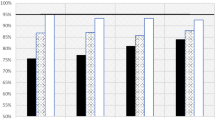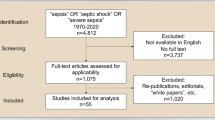Abstract
Objective:
To better address barriers arising from missing and unreliable identifiers in neonatal medical records, we evaluated agreement and discordance among traditional and non-traditional linkage fields within a linked neonatal data set.
Study Design:
The retrospective, descriptive analysis represents infants born from 2013 to 2015. We linked children’s hospital neonatal physician billing records to newborn medical records originating from an academic delivery hospital and evaluated rates of agreement, discordance and missingness for a set of 12 identifier field pairs used in the linkage algorithm.
Results:
We linked 7293 of 7404 physician billing records (98.5%), all of which were deemed valid upon manual review. Linked records contained a mean of 9.1 matching and 1.6 non-matching identifier pairs. Only 4.8% had complete agreement among all 12 identifier pairs.
Conclusion:
Our approach to selection of linkage variables and data formatting preparatory to linkage have generalizability, which may inform future neonatal and perinatal record linkage efforts.
This is a preview of subscription content, access via your institution
Access options
Subscribe to this journal
Receive 12 print issues and online access
$259.00 per year
only $21.58 per issue
Buy this article
- Purchase on Springer Link
- Instant access to full article PDF
Prices may be subject to local taxes which are calculated during checkout

Similar content being viewed by others
References
Weber GM, Mandl KD, Kohane IS . Finding the missing link for big biomedical data. JAMA 2014; 311 (24): 2479–2480.
Vatsalan D, Christen P, Verykios VS . A taxonomy of privacy-preserving record linkage techniques. Inf Syst 2013; 38 (6): 946–969.
Li B, Quan HD, Fong A, Lu MS . Assessing record linkage between health care and Vital statistics databases using deterministic methods. BMC Health Serv Res 2006; 6: 48.
Dufendach KR, Lehmann CU . Topics in neonatal informatics: essential functionalities of the neonatal electronic health record. Neoreviews 2015; 16 (12): e668–e673.
Delnord M, Szamotulska K, Hindori-Mohangoo AD, Blondel B, Macfarlane AJ, Dattani N et al. Linking databases on perinatal health: a review of the literature and current practices in Europe. Eur J Public Health 2016; 26 (3): 422–430.
Herman A, McCarthy B, Bakewell J, Ward R, Mueller B, Maconochie N et al. Data linkage methods used in maternally-linked birth and infant death surveillance data sets from the United States (Georgia, Missouri, Utah and Washington State), Israel, Norway, Scotland and Western Australia. Paediatr Perinat Epidemiol 1997; 11 (S1): 5–22.
Kotelchuck M, Hoang L, Stern JE, Diop H, Belanoff C, Declercq E . The MOSART database: linking the SART CORS clinical database to the population-based Massachusetts PELL reproductive public health data system. Matern Child Health J 2014; 18 (9): 2167–2178.
Baldwin E, Johnson K, Berthoud H, Dublin S . Linking mothers and infants within electronic health records: a comparison of deterministic and probabilistic algorithms. Pharmacoepidemiol Drug Saf 2015; 24 (1): 45–51.
Spooner SA Council on Clinical Information Technology, AAoP. Special requirements of electronic health record systems in pediatrics. Pediatrics 2007; 119 (3):631–637.
Adelman J, Aschner J, Schechter C, Angert R, Weiss J, Rai A et al. Use of temporary names for newborns and associated risks. Pediatrics 2015; 136 (2): 327–333.
Gray JE, Suresh G, Ursprung R, Edwards WH, Nickerson J, Shiono PH et al. Patient misidentification in the neonatal intensive care unit: quantification of risk. Pediatrics 2006; 117 (1): e43–e47.
Hall ES, Goyal NK, Ammerman RT, Miller MM, Jones DE, Short JA et al. Development of a linked perinatal data resource from state administrative and community-based program data. Matern Child Health J 2014; 18 (1): 316–325.
Seske LM, Muglia LJ, Hall ES, Bove KE, Greenberg JM . Infant mortality, cause of death, and vital records reporting in Ohio, United States. Matern Child Health J 2017; 21 (4): 727–733.
Hall ES, Venkatesh M, Greenberg JM . A population study of first and subsequent pregnancy smoking behaviors in Ohio. J Perinatol 2016; 36 (11): 948–953.
Goyal NK, Folger AT, Hall ES, Ammerman RT, Van Ginkel JB, Pickler RS . Effects of home visiting and maternal mental health on use of the emergency department among late preterm infants. J Obstet Gynecol Neonatal Nurs 2015; 44 (1): 135–144.
Goyal NK, Hall ES, Jones DE, Meinzen-Derr JK, Short JA, Ammerman RT et al. Association of maternal and community factors with enrollment in home visiting among at-risk, first-time mothers. Am J Public Health 2014; 104 (Suppl 1): S144–S151.
Goyal NK, Hall ES, Meinzen-Derr JK, Kahn RS, Short JA, Van Ginkel JB et al. Dosage effect of prenatal home visiting on pregnancy outcomes in at-risk, first-time mothers. Pediatrics 2013; 132 (Suppl 2): S118–S125.
Russell RC . Index. US Patent 1,261,167. 1918.
Cheung VY, Bocking AD, Dasilva OP . Preterm discordant twins: what birth weight difference is significant? Am J Obstet Gynecol 1995; 172 (3): 955–959.
Philips L . Hanging on the metaphone. Comput Lang 1990; 7 (12): 38–43.
Winkler WE The State of Record Linkage and Current Research Problems. US Census Bureau: Washington DC, 1999..
Acknowledgements
DISCLAIMER
The content is solely the responsibility of the authors and does not necessarily represent the official views of the National Institutes of Health.
This work was supported by the National Center for Advancing Translational Sciences of the National Institutes of Health through the Center for Clinical and Translational Science and Training at the University of Cincinnati (5UL1TR001425-02) and the Cincinnati Children’s Research Foundation Academic and Research Committee.
Author information
Authors and Affiliations
Corresponding author
Ethics declarations
Competing interests
The authors declare no conflict of interest.
Rights and permissions
About this article
Cite this article
Hall, E., Marsolo, K. & Greenberg, J. Evaluation of identifier field agreement in linked neonatal records. J Perinatol 37, 969–974 (2017). https://doi.org/10.1038/jp.2017.70
Received:
Revised:
Accepted:
Published:
Issue Date:
DOI: https://doi.org/10.1038/jp.2017.70
This article is cited by
-
Sociodemographic differences in linkage error: an examination of four large-scale datasets
BMC Health Services Research (2018)
-
Implementation of a Regional Perinatal Data Repository from Clinical and Billing Records
Maternal and Child Health Journal (2018)



